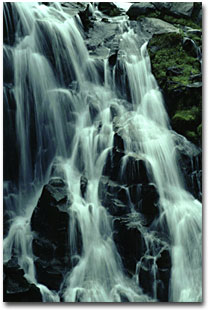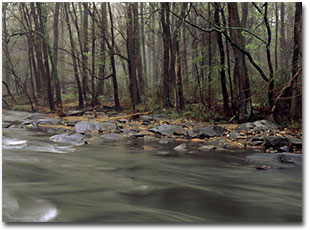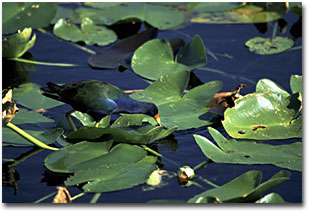|
 If you are like me, nature photography is your passion, but not your career. Spending forty hours a week (or more) at your job, and then tending to the personal obligations in your life, like family, friends, community, or others, does not leave much time left for photography. Unfortunately, vacations never last long enough. It can be very frustrating when you can't nourish that fire in your belly. At times it feels like cabin fever. So, whether you are trying to break into the stock photography market to start a new career, building name recognition, or just competing with yourself, here are several ways you can maximize the time you have to feed your creativity and advance your skills.
If you are like me, nature photography is your passion, but not your career. Spending forty hours a week (or more) at your job, and then tending to the personal obligations in your life, like family, friends, community, or others, does not leave much time left for photography. Unfortunately, vacations never last long enough. It can be very frustrating when you can't nourish that fire in your belly. At times it feels like cabin fever. So, whether you are trying to break into the stock photography market to start a new career, building name recognition, or just competing with yourself, here are several ways you can maximize the time you have to feed your creativity and advance your skills.
Always carry a camera with you.
How many times have you been on your way to or from work, when you encounter a magical photo opportunity where lighting, mood, and composition come together? It could be an exquisite sunrise or sunset, or fog that turns a mundane scene into a mysterious, surreal landscape. You are so excited your index finger twitches in anticipation, but then you realize that you don't have a camera with you. When that happens to you enough times, you won't ever leave home without a camera again. Nor do you have to bring along your best, most expensive camera. By now you have probably accumulated lots of equipment. So instead of letting it gather dust in your closet, carry that second, inexpensive camera equipped with an all-purpose zoom like a 28-200 mm. Of course, take a tripod, a few frequently used filters, and don't forget film.
Return to your favorite local spots again and again.
One advantage you have over most pros is that you know the best spots for nature photography in your area. More importantly, you know what they look like in all kinds of weather and light, and in every season. I have many such places that I keep on a checklist and visit year-round. One such place is along the Red Clay Creek in northern Delaware. "My" spot is a 10-minute hike along the railroad tracks from where I park my car. One day last spring, after a soaking overnight rain, the morning started with that fine, drizzly kind of rain accompanied by fog. The atmospherics were perfect for my spot, so I rushed to get there. It was worth the trip, because I was able to capture the wet, saturated colors of the trees and rocks, the delicate buds of new life, the flowing, almost brooding look of the creek, and just enough fog to add some intrigue. As many times as I have photographed here, this morning gave it a different look, a primeval quality, and evoked a feeling that I knew would not repeat itself quite the same way. For me, the only words to describe it are what Henry David Thoreau called "mornings of creation."
 Take advantage of business destinations close to natural areas.
Many professionals like doctors, lawyers, engineers, teachers, or nurses have associations and organizations that meet annually, or offer short courses throughout the year. Often, these meetings are held in attractive locations around the country, usually in a big city with plenty of after-hours activities. Fortunately, in many of these so called "convention cities," natural areas are only a couple hours away. For example, over the years, business trips have taken me to Seattle, Denver, and Miami, among others. On these trips I stayed the weekend to photograph at Mt. Rainier, Rocky Mountain, and Everglades National Parks. Despite the limited time, I got the chance to see the parks, hone my skills, and expand my picture taking opportunities. As an added bonus, keep in mind that your company picks up the airfare. In many cases, because you have stayed over a weekend, the fare will be lower too.
Take advantage of business destinations close to natural areas.
Many professionals like doctors, lawyers, engineers, teachers, or nurses have associations and organizations that meet annually, or offer short courses throughout the year. Often, these meetings are held in attractive locations around the country, usually in a big city with plenty of after-hours activities. Fortunately, in many of these so called "convention cities," natural areas are only a couple hours away. For example, over the years, business trips have taken me to Seattle, Denver, and Miami, among others. On these trips I stayed the weekend to photograph at Mt. Rainier, Rocky Mountain, and Everglades National Parks. Despite the limited time, I got the chance to see the parks, hone my skills, and expand my picture taking opportunities. As an added bonus, keep in mind that your company picks up the airfare. In many cases, because you have stayed over a weekend, the fare will be lower too.
Keep notes to record photographic details.
Learning is a trial and error process. However, there are two ways to arrive at the end result, namely, efficient/proficient photography skills. You can take the long route that involves experimentation without documentation. If you are lucky, amid all of life's distractions, your neurons will eventually make a permanent connection and knowledge is retained. But you don't have the luxury of time, so why not take the short way and record the details of your photographic shoots? For example: what shutter speed and f-stop did you use and why? Which exposure did you like the best? Did you use any filters, or should you have used one, such as a graduated neutral density or polarizing filter? How did the lens selection affect the perspective? What level of fill flash made the foreground subject jump out without being obvious? Where in the park did you take the photo? What time of year was it? Record essential information during your outings and leapfrog ahead of your competition in the learning process.
 Preplan, preplan, preplan!
To make the most of your weekend excursions, day trips, or few hours of shooting, plan your trip so that you will be ready for anything. What kind of picture opportunities can you expect, landscapes, wildlife, macros? What equipment will you need? From what direction will the light come? When does the sun rise, set, or when will low and high tides be? As a corollary to this, know how to operate your new equipment before you get in the field. These days with information readily available, sometimes just a web site away, there is no excuse for not being prepared.
Preplan, preplan, preplan!
To make the most of your weekend excursions, day trips, or few hours of shooting, plan your trip so that you will be ready for anything. What kind of picture opportunities can you expect, landscapes, wildlife, macros? What equipment will you need? From what direction will the light come? When does the sun rise, set, or when will low and high tides be? As a corollary to this, know how to operate your new equipment before you get in the field. These days with information readily available, sometimes just a web site away, there is no excuse for not being prepared.
Make these suggestions a part of your modus operandi and you should see your productivity increase. So, get out there and feed the hunger! Happy shooting.
About the images...
Myrtle Falls on Skyline Trail
Mt. Rainier National Park, Washington
Nikon FA
Tamron 28-200 mm f/3.8-5.6
Kodachrome 64
No filtration
Slik U212 Deluxe tripod
© Ray Bulson, 1993
Red Clay Creek
Wilmington, Delaware
Pentax 645N
Pentax 45-85 mm f/4.5
Fujichrome Velvia rated at ISO 40
f/32, 2 seconds
No filtration
Bogen 3001 tripod with 3030 head
© Ray Bulson, 2000
Purple Gallinule
Anhinga Trail, Everglades National Park, Florida
Nikon F5
Tamron 200-400 mm f/5.6
Fujichrome Velvi rated at ISO 40
f8, shutter speed unrecorded
No filtration
Bogen 3001 tripod with 3030 head
© Ray Bulson, 1998
Editor's note: Ray Bulson is a NPN reader who resides in Newark, Delaware. More of his work can be seen on his web site, Wilderness-Visions.com.
|

